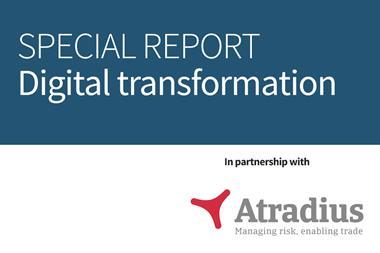Digitalisation has emerged as a significant theme for discussion at this year’s GVNW symposium in Munich, Germany, as insurance and risk professionals consider the impact on their own corporate markets and on the insurance industry.
For Bertelsmann Group, digitalisation has affected its traditional printing activity and provided opportunities to develop in new fields including logistics services and education provision.
“The circumstances of our business will be more and more digital and so it’s interesting to understand which actions you can take against a cyber attack or to influence some other cyber risk. You need a lot of meetings, you have to discuss this with the IT people. You have to translate the world of IT into the world of risk management and to bring it to the underwriter and find the right solutions,” said Ralf Mareczek, vice president, corporate insurance, at Bertelsmann.
The Bertelsmann has developed a new digital learning platform for health professionals such as nurses and hospital staff.
“The business has some computers, desktops, the people. You have not big property risks, but perhaps you have a risk if the software malfunctions. If there is a cyber attack from outside. What happens? It’s a lot of change compared to the old economy of printing,” Mareczek said.
He added that there was more work to do in the European insurance markets to provide adequate cover and services to risk managers on cyber risk.
“At the moment, we’re satisfied with the level which we buy. But it could be that, at some stage, we need more capacity and we will see how the market will react. As well, you have only a few players who can handle cyber risk in a very detailed way.
“You need experts. You need the right underwriters who have understanding of the risk. In Europe, especially in Germany, there’s is a little bit of development. I hope that there will be a change in a few years that you have the right specialists for that. And at the moment, you have to look in a very deep way to find the right person,” Mereczek said.
The blockchain potential
On the other side, the insurance market itself is grappling with the challenges of how to incorporate digital technology into its processes to improve efficiencies.
Benedikt Hintze, risk and insurance manager at Georgsmarienhütte Holdings, manufacturer of car parts including crankshafts, piston rods, cam shafts, drive shafts, gearbox parts and chassis parts, said: “Blockchain is one way of solving the problem. It’s an expensive way, but it can help a lot. If I look at today’s insurance market, we still send a lot of paper between insurers, brokers and reinsurers. At the end you can be left wondering, okay, what is the actual insurance policy now, what did we actually agree? And there is a high cost associated with that — not only the cost of the premium, but the transaction cost.”
Blockchain offers a potential solution to these challenges, as does Artificial Intelligence or a combination of both. “I’m not saying that this could be a full solution at the moment, because Blockchain is expensive. It’s highly sophisticated and not scalable. Maybe another technology will emerge in future years. But if I say how it is at the moment, insurance is really not all that efficient,” Hintze said.




















No comments yet